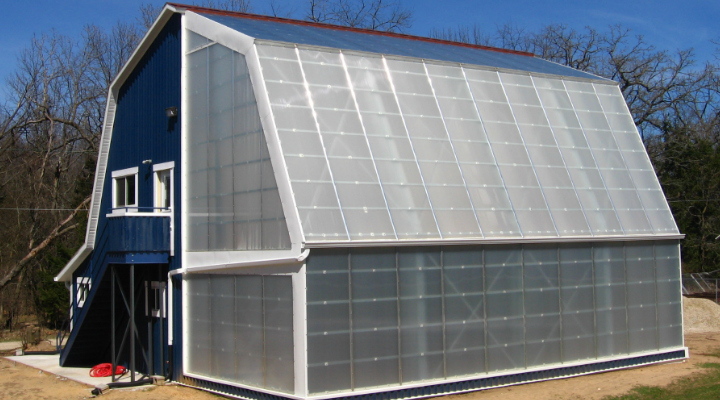
As watermelon farmers in southeast Wisconsin, weather aberrations and a shorter growing season leave
the results of our considerable efforts up to chance. We feel blessed to have good soil for melons and are thankful for the good seasons. However, we had to figure out what to do about those random, difficult seasons in between if we wanted to continue providing natural watermelons to our customers who appreciate them.
Our SWAG Greenhouse – Why? And What is it?
How were we going to compensate for the weather, offer more variety in our produce, and have a more predictable, consistent harvest? How could we lower the risk of the frenzied manual work we were packing into just a few months, and still be around for next year even if the weather had not “cooperated?” Answer: We had to balance it out with other produce sales the rest of the year. But how could we affordably do that in Wisconsin?
Indoor vertical farming was something we began to research. How could we have a controlled environment to plant our melons earlier so that we could extend our growing season? How could we begin to offer a variety of pesticide-free, chemical-free, natural produce and culinary herbs year-round instead of relying on just one short season?
Here’s what we did:
- Studied aquaponics and hydroponics, and took some courses
- Visited many greenhouses and aquaponics facilities
- Researched vertical farming equipment manufacturers to see what worked well and what did not
- Experimented with aquaponics in our basement and outside
After gathering as much information as possible, we began designing. We needed a compact facility to accommodate the latest technology and equipment for this type of agriculture (and aquaculture). It also had to be very energy-efficient to keep the produce at a reasonable price. As far as we know, this is the first time an aquaponics / hydroponics greenhouse has been designed for:
- maximum growing area
- in this particular shape and configuration
- utilizing different heating and cooling methods
- with such a relatively small footprint
The building is experimental, but the growing methods are proven. The design also includes spaces for continued experimentation with new technologies, to learn more and share advancements with others who share our interest in controlled environment agricultural systems.
We are nearing completion of our SWAG (Sustainable Winter Aquaponics Greenhouse). Then we will begin assembling and configuring the equipment. Interested in following our progress from start to finish? The first in our series is: Planning & Design
